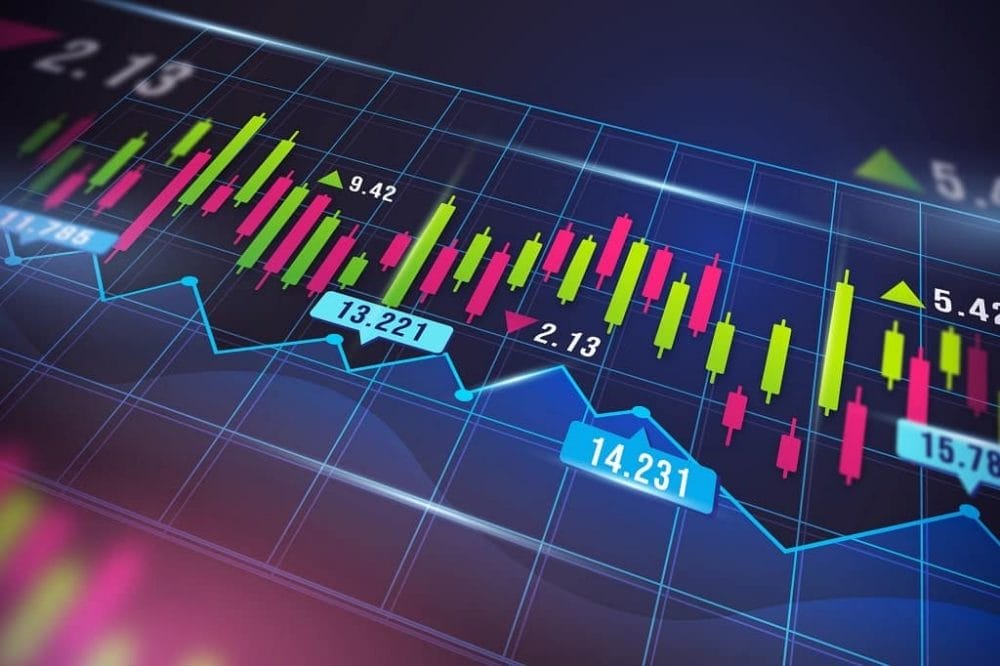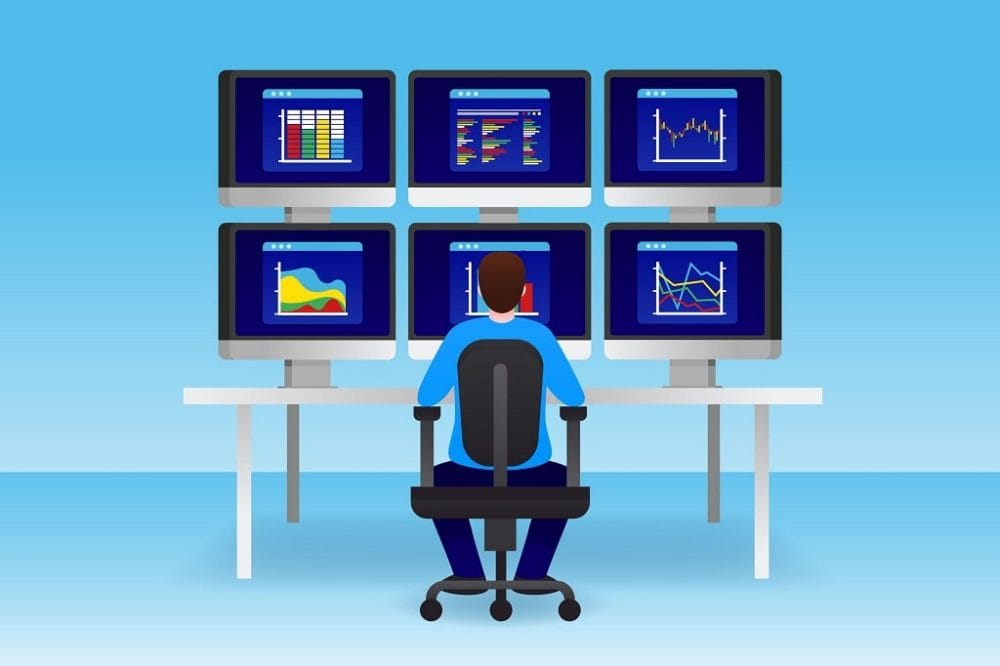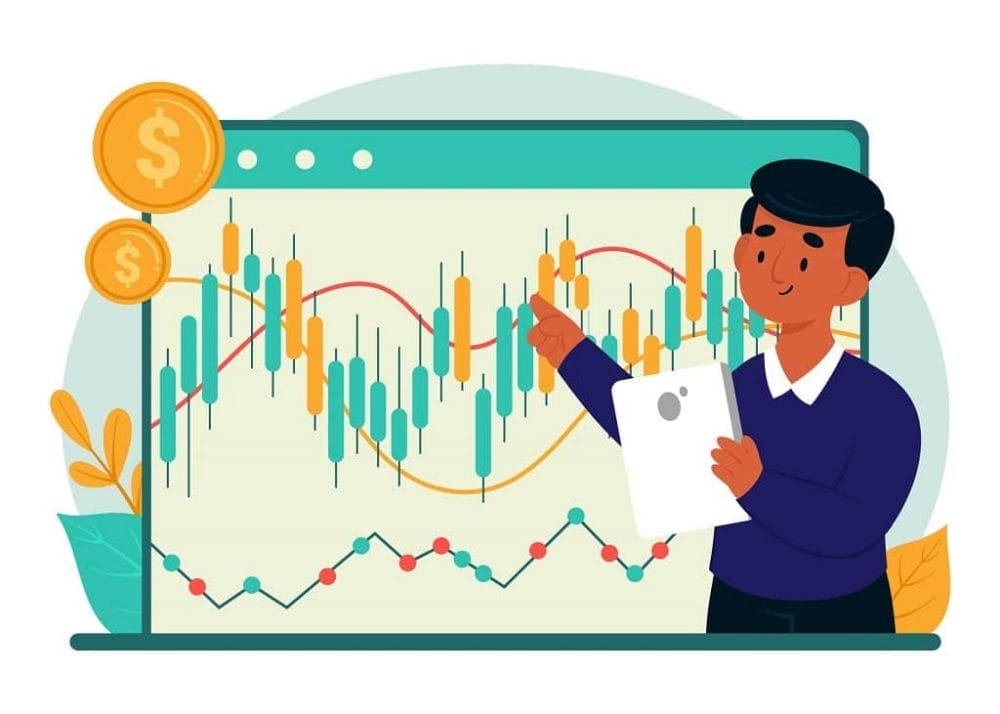Mastering Technical Analysis for Successful Cryptocurrency Trading
Introduction
Welcome to the world of cryptocurrency trading, where mastering crypto technical analysis can be the key to unlocking success. In this comprehensive guide, we will delve into the intricacies of technical analysis and how it plays a vital role in your journey towards profitable cryptocurrency trading. Whether you are a seasoned trader or just starting in the crypto market, understanding technical analysis can significantly enhance your trading strategies and decision-making. Let’s explore the essential concepts, indicators, and patterns that will empower you to navigate the dynamic cryptocurrency market with confidence and achieve your trading goals with proficiency in mastering crypto technical analysis with Ailtra.ai.
Mastering Crypto Technical Analysis: The Basics Uncovered

Understanding the Basics of Technical Analysis is a fundamental step in Mastering Crypto Technical Analysis for Successful Cryptocurrency Trading. Technical analysis is a powerful tool that enables traders to make informed decisions by analyzing historical price data and identifying patterns and trends in the cryptocurrency market. It involves studying charts, using technical indicators, and understanding key concepts to gain insights into market movements.
At the core of Mastering Crypto Technical Analysis lies the understanding of what technical analysis is in the context of cryptocurrency trading. Traders use this method to assess market sentiment, predict price movements, and determine potential entry and exit points for their trades. By mastering the basics, traders can develop a strong foundation for more advanced analysis and strategy development.
Charts play a pivotal role in technical analysis, as they visually represent the price movements of cryptocurrencies over time. Different chart types, such as line charts, bar charts, and candlestick charts, provide unique insights into price patterns and trends. Mastering Crypto Technical Analysis involves knowing how to interpret these charts and identify important price levels and patterns.
What is Technical Analysis in Cryptocurrency Trading?
“Mastering Technical Analysis for Successful Cryptocurrency Trading,” understanding what technical analysis entails is crucial for traders seeking to enhance their trading strategies. Technical analysis is a methodology used to evaluate market data, primarily historical price and volume data, to forecast future price movements and identify potential trading opportunities. It involves the examination of charts, patterns, and various technical indicators to gain insights into market trends and make informed trading decisions.
Mastering Crypto Technical Analysis: Key Aspects You Need to Know
- Historical Price Data: Technical analysis relies on historical price data, which includes open, high, low, and close prices over specific time frames (e.g., hourly, daily, weekly). This data is plotted on charts to visualize price movements.
- Charts and Candlestick Patterns: Traders use various types of charts, such as line charts, bar charts, and candlestick charts, to analyze price patterns. Candlestick patterns, in particular, provide valuable information about market sentiment and price trends.
- Technical Indicators: These are mathematical calculations applied to price data to provide additional insights. Common technical indicators include Moving Averages, Relative Strength Index (RSI), and Moving Average Convergence Divergence (MACD).
The Role of Technical Analysis in Cryptocurrency Trading:
Technical analysis plays a fundamental role in cryptocurrency trading for several reasons:
- Price Trend Identification: By analyzing historical price data, traders can identify trends in cryptocurrency prices, such as uptrends, downtrends, or sideways movements. This helps in determining the market sentiment and potential price direction.
- Entry and Exit Points: Technical analysis helps traders identify optimal entry and exit points for their trades. It allows them to time their trades effectively, maximizing potential profits and minimizing losses.
- Risk Management: Technical analysis provides insights into potential price levels where support or resistance may occur. This information is valuable for setting stop-loss orders and managing risk in volatile cryptocurrency markets.
- Pattern Recognition: Chart patterns and candlestick formations, like head and shoulders, double tops, and triangles, can indicate potential trend reversals or continuation patterns.
Mastering Crypto Technical Analysis for Informed Trading Decisions:
To master technical analysis in cryptocurrency trading, traders should:
- Learn Chart Reading: Understand different chart types and how to interpret candlestick patterns for valuable insights into price movements.
- Study Technical Indicators: Explore various technical indicators and their applications in different market conditions.
- Identify Trends and Patterns: Practice identifying trends and chart patterns to spot potential trading opportunities.
- Combine Multiple Indicators: Utilize a combination of indicators to validate signals and make well-informed decisions.
Mastering Crypto Technical Analysis: Support and Resistance Analysis

In “Mastering Technical Analysis for Successful Cryptocurrency Trading,” Ailtra emphasizes the significance of analyzing support and resistance levels. These essential aspects of technical analysis involve identifying key price levels on a chart that can greatly influence the potential direction of a cryptocurrency’s price movement. Ailtra.ai equips traders with the knowledge and tools to master this vital analysis for more informed trading decisions.
Support Level: A support level is a price level where a cryptocurrency’s price has historically had difficulty falling below. It acts as a floor for the price, as there is a higher demand for the cryptocurrency when it reaches that level. Traders often look for support levels to identify potential buying opportunities, as there is a higher likelihood of the price bouncing back up from these levels.
When mastering crypto technical analysis, traders use various tools and indicators to identify support levels. Trendlines, moving averages, and historical price data are commonly used to pinpoint these critical levels on a chart. Recognizing and understanding support levels can help traders make informed decisions about when to enter a trade and set appropriate stop-loss levels to protect their investments.
Resistance Level: On the other hand, a resistance level is a price level where a cryptocurrency’s price has historically struggled to move above. It acts as a ceiling for the price, as there is a higher supply of the cryptocurrency when it reaches that level. Traders often look for resistance levels to identify potential selling opportunities, as there is a higher likelihood of the price reversing and moving lower from these levels.
In mastering crypto technical analysis, traders closely monitor resistance levels to assess potential profit-taking points. Identifying strong resistance levels can help traders make informed decisions about when to sell their holdings or take partial profits during a bullish trend.
Support and Resistance Flip: One interesting phenomenon that traders encounter when mastering crypto technical analysis is the concept of support and resistance flip. This occurs when a previous resistance level, once broken, becomes a new support level, and vice versa. The flip indicates a shift in market sentiment and can present significant trading opportunities.
By analyzing support and resistance levels, traders can gain valuable insights into the psychology of the market and the balance between supply and demand for a particular cryptocurrency. These key levels serve as important reference points to help traders make well-informed decisions about their trading strategies and risk management techniques.
Mastering Crypto Technical Analysis: Identifying Key Trading Levels
In the realm of cryptocurrency trading, mastering technical analysis is essential for making informed decisions and achieving success in the highly volatile market. One crucial aspect of technical analysis is identifying key levels that can significantly influence the price movement of cryptocurrencies. Understanding these key levels can be a game-changer for traders, as they provide valuable insights into potential entry and exit points.
Mastering Crypto Technical Analysis involves recognizing support and resistance levels, which are critical elements in analyzing price trends. Support levels are price points at which a cryptocurrency’s price has historically found support, preventing it from declining further. On the other hand, resistance levels are price points at which the price has historically encountered resistance, preventing it from rising further.
Identifying these support and resistance levels can offer significant advantages to traders. When a cryptocurrency’s price approaches a support level, it may indicate a potential buying opportunity, as historical data suggests that the price is likely to bounce back from that level. Similarly, when the price approaches a resistance level, it may signal a potential selling opportunity, as the historical data indicates that the price is likely to face selling pressure at that level.
Additionally, mastering technical analysis involves using various tools and indicators to confirm these key levels. For instance, trendlines can be drawn to connect successive higher lows or lower highs, which can help identify support and resistance levels more accurately. Moving averages can also aid in validating these levels, as they provide insights into the overall trend direction.
Incorporating other technical indicators such as the Relative Strength Index (RSI) and the Moving Average Convergence Divergence (MACD) can further enhance the analysis of key levels. These indicators offer valuable information about the momentum and strength of the price movement, helping traders make more precise trading decisions.
Mastering Crypto Technical Analysis: Essential Indicators for Cryptocurrency

In the dynamic world of cryptocurrency trading, mastering technical analysis is essential for making informed and successful trading decisions. Technical analysis involves the study of historical price data, trading volume, and various indicators to forecast future price movements. As we delve into the context of “Mastering Technical Analysis for Successful Cryptocurrency Trading,” understanding essential technical indicators becomes paramount. To achieve expertise in technical analysis, Ailtra.ai provides comprehensive tools and insights for traders to harness the power of data-driven strategies and optimize their cryptocurrency trading endeavors. By leveraging the resources offered by Ailtra.ai, traders can gain a deeper understanding of support and resistance levels, identify trends, and develop robust trading strategies for improved outcomes in the dynamic crypto market.
- Moving Averages: Moving averages are fundamental technical indicators used to smooth out price data and identify trends over a specific period. They help traders gauge the overall market direction and potential support and resistance levels. Traders can use simple moving averages (SMA) or exponential moving averages (EMA) to analyze cryptocurrency price trends.
- Relative Strength Index (RSI): RSI is a momentum oscillator that measures the speed and change of price movements. It oscillates between 0 and 100, with values above 70 indicating overbought conditions and values below 30 suggesting oversold conditions. RSI helps traders identify potential trend reversals and assess market strength.
- Moving Average Convergence Divergence (MACD): MACD is a versatile indicator that combines moving averages to provide insights into trend strength and potential trend reversals. The MACD line represents the difference between two moving averages, while the signal line is a moving average of the MACD line. Crossovers and divergences between the two lines offer valuable trading signals.
- Bollinger Bands: Bollinger Bands consist of a middle moving average line and two outer bands that represent the standard deviation of price movements. These bands expand and contract based on market volatility. Traders use Bollinger Bands to identify periods of low volatility (tight bands) and potential price breakouts (wide bands).
- Fibonacci Retracement: Fibonacci retracement levels are horizontal lines drawn on a chart to indicate potential support and resistance levels based on the Fibonacci sequence. Traders use these levels to identify areas where price corrections may end and trends may resume.
- Ichimoku Cloud: The Ichimoku Cloud is a comprehensive indicator that provides insights into trend direction, support and resistance levels, and potential price reversals. It consists of five lines that offer a holistic view of the market’s current state.
- Average True Range (ATR): ATR measures market volatility by calculating the average range between a series of candles. It helps traders set appropriate stop-loss and take-profit levels based on current market conditions.
Using Moving Averages in Mastering Crypto Technical Analysis
Mastering technical analysis for successful cryptocurrency trading, utilizing moving averages is a fundamental aspect that traders should grasp. Moving averages are versatile and widely-used indicators that offer valuable insights into the price trends of cryptocurrencies. They play a pivotal role in understanding market movements and formulating informed trading strategies.
Moving averages are mathematical calculations that smooth out price data over a specified period, resulting in a trend line that provides a clearer view of the overall price direction. The two most common types of moving averages are the Simple Moving Average (SMA) and the Exponential Moving Average (EMA). The SMA equally weights all data points within the chosen period, while the EMA places more weight on recent data, making it more responsive to current market conditions.
One of the primary applications of moving averages is to identify the direction of a trend. By plotting different moving averages on a price chart, traders can determine the prevailing trend’s strength and potential reversals. For instance, when the price of a cryptocurrency remains above its moving average, it indicates an uptrend, while a price below the moving average indicates a downtrend. Traders can use this information to make buy or sell decisions accordingly.
Moving averages also assist in identifying support and resistance levels. In an uptrend, moving averages act as dynamic support, and in a downtrend, they act as resistance. Traders can observe the interaction between the price and moving averages to pinpoint potential entry and exit points for their trades.
The crossover of moving averages is another crucial aspect of mastering crypto technical analysis. A “Golden Cross” occurs when a short-term moving average, such as the 50-day SMA, crosses above a longer-term moving average, like the 200-day SMA. This signals a shift from a bearish to a bullish trend, suggesting a potential buying opportunity. Conversely, a “Death Cross” happens when the short-term moving average crosses below the long-term moving average, indicating a change from a bullish to a bearish trend and potentially prompting traders to consider selling.
Trendlines and Their Significance in Mastering Crypto Technical Analysis
“Mastering Technical Analysis for Successful Cryptocurrency Trading,” trendlines emerge as a powerful tool that holds immense significance for traders and investors. Trendlines are a fundamental aspect of technical analysis, aiding in the identification of price trends and potential reversals in the cryptocurrency market. By understanding and effectively implementing trendlines, traders can enhance their ability to make informed trading decisions and optimize their strategies for successful cryptocurrency trading.
Mastering Crypto Technical Analysis: Identifying Price Trends
Trendlines play a pivotal role in identifying and confirming price trends within the cryptocurrency market. When a trendline connects a series of higher lows, it indicates an upward price trend, suggesting that buyers are becoming increasingly dominant. Conversely, a trendline connecting a sequence of lower highs indicates a downward price trend, signaling that sellers are gaining control. By recognizing these trends, traders can align their positions with the prevailing market sentiment.
Support and Resistance Levels:
Trendlines also act as valuable tools for determining support and resistance levels in cryptocurrency trading. In an upward trend, the trendline often serves as a support level, indicating a potential bounce-back point after price corrections. On the other hand, in a downward trend, the trendline acts as a resistance level, capping the price from rising further. Understanding these levels helps traders set appropriate entry and exit points for their trades.
Trendline Breakouts:
Trendline breakouts occur when the price moves beyond the established trendline, signifying a potential change in the trend’s direction. Traders watch for these breakouts as they can indicate upcoming price reversals or continuation patterns. A bullish breakout above an established downward trendline may signal a trend reversal, while a bearish breakout below an upward trendline could indicate a trend continuation. Identifying and interpreting these breakouts are crucial skills for traders aiming to capitalize on emerging opportunities.
Mastering Crypto Technical Analysis: Drawing Accurate Trendlines
Drawing accurate trendlines is essential in mastering crypto technical analysis. It requires identifying significant price points that align with the overall trend while avoiding random price fluctuations. Traders often use candlestick charts and other technical indicators to validate the reliability of trendlines. Additionally, adjusting the timeframe can help tailor trendlines to different trading strategies, making them versatile tools in the trader’s arsenal.
Chart Patterns and Their Predictive Nature

Mastering Technical Analysis for Successful Cryptocurrency Trading,” chart patterns play a crucial role in guiding traders’ decisions and predicting potential price movements. Chart patterns are visual representations of historical price data that tend to repeat over time. By understanding and interpreting these patterns, traders can gain valuable insights into the market’s behavior and make informed trading decisions.
One of the most well-known chart patterns is the “Head and Shoulders” pattern, which is a reliable indicator of trend reversal. It consists of three peaks, with the middle peak being the highest (the head) and the two surrounding peaks (the shoulders) being lower in height. This pattern signifies a shift from an uptrend to a downtrend and can be a strong signal for traders to consider selling positions or opening short positions.
Another significant chart pattern is the “Cup and Handle” pattern, which often appears during bullish trends. This pattern resembles a cup followed by a smaller consolidation period known as the “handle.” The cup represents a period of accumulation, where buyers steadily build their positions, and the handle indicates a brief pullback before the next upward move. Traders who can identify this pattern in their technical analysis may consider entering long positions, anticipating a continuation of the upward trend.
“Doubles Tops and Double Bottoms” are also prevalent chart patterns with predictive capabilities. A double top pattern occurs when the price reaches a resistance level twice, fails to break above it, and subsequently reverses its trend. Conversely, a double bottom pattern forms when the price reaches a support level twice, fails to break below it, and starts an upward trend. These patterns can provide valuable entry and exit points for traders looking to capitalize on potential trend reversals.
Mastering Crypto Technical Analysis: Triangles and Rectangles
In the world of cryptocurrency trading, mastering technical analysis is a crucial skill for making informed and successful trading decisions. Among the various chart patterns that traders need to understand, triangles and rectangles stand out as important formations with predictive potential. In this context of “Mastering Technical Analysis for Successful Cryptocurrency Trading,” let’s explore the significance of triangles and rectangles and how they can enhance your crypto trading strategies.
Triangles and rectangles are classic chart patterns that provide valuable insights into market dynamics. These patterns occur when the price movements of a cryptocurrency create distinct geometric shapes on a price chart. They signify periods of consolidation and indecision in the market, offering valuable clues about potential price breakouts or breakdowns.
Understanding Triangles in Mastering Crypto Technical Analysis:
Triangles are formed when the highs and lows of a cryptocurrency’s price start to converge, creating a triangle-like shape on the chart. There are three main types of triangles: ascending triangles, descending triangles, and symmetrical triangles. Each type suggests a different potential price movement.
- Ascending triangles indicate a bullish bias, as the price forms higher lows, suggesting increasing buying pressure that may lead to a potential breakout to the upside.
- Descending triangles, on the other hand, indicate a bearish bias, as the price forms lower highs, signaling potential selling pressure and a possible breakdown to the downside.
- Symmetrical triangles imply an imminent price breakout but do not provide a clear bias in either direction. Traders need to watch for a decisive move in either direction to confirm a trend.
The Role of Rectangles in Mastering Crypto Technical Analysis:
Rectangles are horizontal price patterns that form when the price moves between consistent support and resistance levels. They represent periods of consolidation, where buyers and sellers are in equilibrium, waiting for a catalyst to drive the price in a specific direction.
- A rectangle’s upper boundary acts as a resistance level, preventing the price from moving higher.
- Conversely, the lower boundary acts as a support level, preventing the price from declining further.
Trading Strategies with Triangles and Rectangles:
As a crypto trader, mastering the identification of triangles and rectangles can be highly beneficial. When you spot these patterns during periods of consolidation, you can anticipate potential breakout or breakdown points. Traders often use triangle and rectangle patterns to set entry and exit points, as well as stop-loss levels, to manage risk effectively.
The Power of Head and Shoulders in Cryptocurrency Trading

Mastering technical analysis for successful cryptocurrency trading, one of the most powerful and widely recognized chart patterns is the Head and Shoulders pattern. This pattern is a key tool that traders use to identify potential trend reversals in the cryptocurrency market. Understanding the dynamics of the Head and Shoulders pattern can significantly enhance a trader’s ability to make informed decisions and capitalize on market opportunities.
The Head and Shoulders pattern consists of three distinctive peaks on a price chart. The first peak, known as the left shoulder, is formed during an uptrend when the price reaches a high point and then retraces. The subsequent peak, referred to as the head, occurs when the price rises above the left shoulder and forms the highest point of the pattern. Following the head, the price retraces again, creating the right shoulder, which is lower than the head and aligns with the left shoulder.
Recognizing the Head and Shoulders pattern is critical for traders because it often signals a potential trend reversal from bullish to bearish. The pattern indicates that the buyers’ momentum is weakening, and sellers may be gaining control, leading to a possible downward price movement.
Understanding the Head and Shoulders Pattern
The Head and Shoulders pattern is a widely recognized chart formation that typically signals a potential trend reversal. It consists of three peaks or troughs on a price chart, forming the shape of a head with two shoulders on each side. The middle peak represents the head, while the peaks on either side are the shoulders. This pattern usually occurs after an uptrend and indicates a potential shift towards a downtrend.
Identifying the Components of the Head and Shoulders Pattern
- Left Shoulder: The first peak, known as the left shoulder, forms as the price reaches a high point and starts to decline.
- Head: The middle peak, referred to as the head, represents the highest point in the pattern. It forms as the price surges above the left shoulder and then retraces back.
- Right Shoulder: The third peak, called the right shoulder, occurs when the price rises again but fails to surpass the head’s level. It is followed by another decline.
Confirmation and Neckline
The Head and Shoulders pattern is confirmed when the price breaks below a specific level called the neckline, which connects the lows of the left shoulder, head, and right shoulder. This breakdown is considered a strong bearish signal, indicating a potential trend reversal and suggesting that the uptrend has likely exhausted its momentum.
Trading Strategies with the Head and Shoulders Pattern
- Short Position: Traders can take a short position when the price breaks below the neckline. They often set their price targets based on the distance from the head to the neckline. This projected distance is then subtracted from the breakdown point to estimate the potential downward move.
- Stop-Loss Placement: To manage risk, traders typically place their stop-loss orders just above the right shoulder’s high. This level acts as a crucial resistance area, and if the price breaks above it, the Head and Shoulders pattern may become invalid.
Mastering Crypto Technical Analysis with the Head and Shoulders Pattern
The Head and Shoulders pattern is a valuable tool in a trader’s arsenal, and mastering it is essential for successful cryptocurrency trading. By recognizing and understanding this pattern, traders can make informed decisions, identify potential trend reversals, and implement effective trading strategies to maximize profits while minimizing risks. As with any technical analysis tool, combining the Head and Shoulders pattern with other indicators and analysis methods can further enhance trading accuracy and overall performance.
Unlock the secrets of crypto markets with Mastering Crypto Technical Analysis and elevate your trading game.
Warren Buffett
Recapitulation
Mastering technical analysis is a crucial skill for achieving success in cryptocurrency trading. Understanding chart patterns, indicators, and trends empowers traders to make informed decisions and identify profitable entry and exit points. By delving into the intricacies of technical analysis, such as the powerful Head and Shoulders pattern, traders can gain a competitive edge in the volatile cryptocurrency market. With the ability to analyze price movements and market trends effectively, traders can enhance their trading strategies and navigate the crypto landscape with confidence. By continuously honing their technical analysis skills and combining them with risk management and market research, traders can position themselves for successful and rewarding cryptocurrency trading experiences. Embracing the principles of technical analysis is a fundamental step towards achieving consistent profitability and becoming a proficient trader in the exciting world of cryptocurrencies.
 Flat 50% off on trading fees for the first 1500 early birds: Click here to join now & claim your reward!
Flat 50% off on trading fees for the first 1500 early birds: Click here to join now & claim your reward! 





